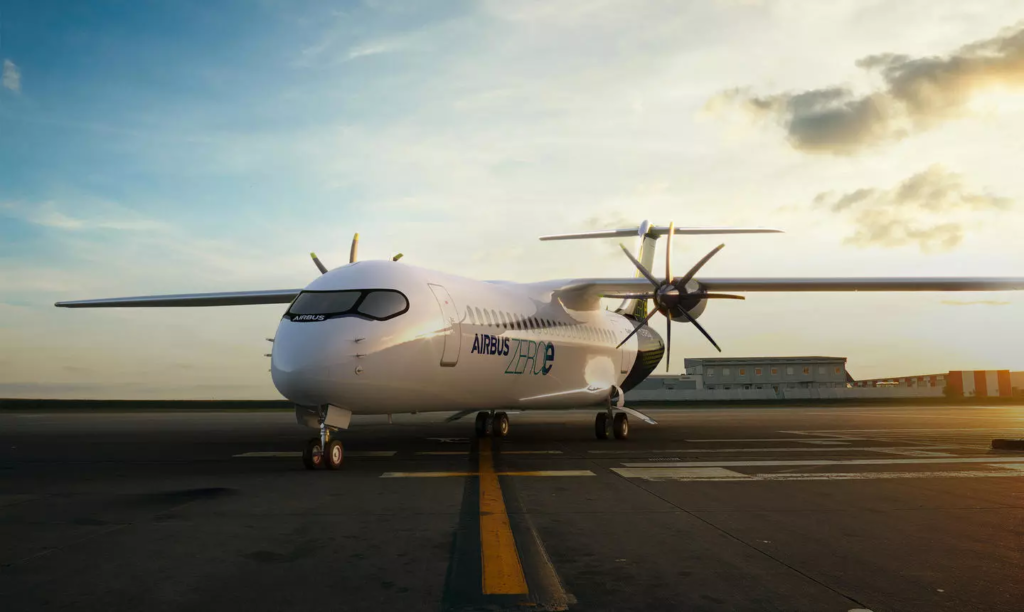LONDON – As national flag carrier Air New Zealand continues to advance its strategy for the replacement of its domestic fleet with green, zero emission alternatives, Airbus is to partner in the development of hydrogen fuelled aviation.
The consortium of stakeholders will pave the way to further act upon New Zealand’s – and also the wider aviation industry’s – collective ambition towards decarbonisation.
The overriding intent is to evaluate means of deploying hydrogen hubs at New Zealand airports. This will commence with a case study at Christchurch International Airport.
If successful, commercial hydrogen-powered aviation could be extended to cover the entirety of New Zealand’s domestic network, in addition to national carrier Air New Zealand.
The additional participants to the consortium include Christchurch International Airport, Fortescue Future Industries (FFI), Hiringa, and Fabrum.
New Zealand as a nation boasts a proactivity with the development and implementation of greener, sustainable energy sources. To complement this, the consortium partners have a shared vision to support New Zealand to pioneer the commercial deployment of hydrogen-powered aircraft.
Collaboration aims
Overall, the collaboration will widen and affirm the consortium’s understanding of hydrogen-powered aircraft concepts and operations, hydrogen supply, hydrogen infrastructure and fuelling requirements at airports, in order to support the development of this hydrogen aviation ecosystem in New Zealand.
The work will also identify the pathways to viable and sustainable commercialisation of hydrogen powered aircraft technologies in New Zealand as well as the accompanying regulatory framework.
As well as their shared vision, the partners in the consortium contribute their own extensive know-how, thanks to the independent strides they have each made towards the prospect of a decarbonised, hydrogen-based aviation industry.
Partner contributions
The stakeholders in the collaboration each bring key contributions and experience to the overall goal.
Air New Zealand is actively investigating the role of low-emission aircraft technologies to support the decarbonisation of its network.
Christchurch International Airport (CIAL) has reduced airport emissions by 90% since 2016 and is mentoring airports globally on how to decarbonise their operations;
Hiringa Energy (Hiringa) is focussing on the commercial development and operation of hydrogen production, storage, distribution, and supply infrastructure;
FFI (Fortescue Future Industries) is promoting the use of hydrogen and ammonia produced from 100% renewable energy sources;
Fabrum, a global leader in the design and manufacture of full ground infrastructure for hydrogen production, liquefaction, storage, fuel transfer, on-board flight fuel systems and architecture, motors, and certification support;
Airbus’ role
On the technical side, Airbus will contribute the learnings from its “ZEROe” hydrogen aircraft features and concept of operations, for in-flight as well as on-ground operations.
The aircraft manufacturer has stated that it will make available its own research in the field of liquid hydrogen and the deployment of hydrogen powered aircraft.
Airbus will bring on board its experience and learnings on the development and its study of “Hydrogen Hubs at Airports”, from similar case studies on-going in other parts of the world.
Indeed, Airbus has been an early leading advocate for hydrogen, identifying it as the most promising option for decarbonisation of commercial aviation and to meet the environmental challenge.
Low-carbon hydrogen can be used directly on-board aircraft for propulsion through combustion in a turbine and for on-board power generation through fuel cells.
In addition it can be used indirectly as a feedstock for synthetic aviation fuel (Power-to-Liquid, or PtL).
Airbus state that their ambition is to develop and put in service a new generation of commercial passenger transport aircraft using low-carbon hydrogen by 2035.









